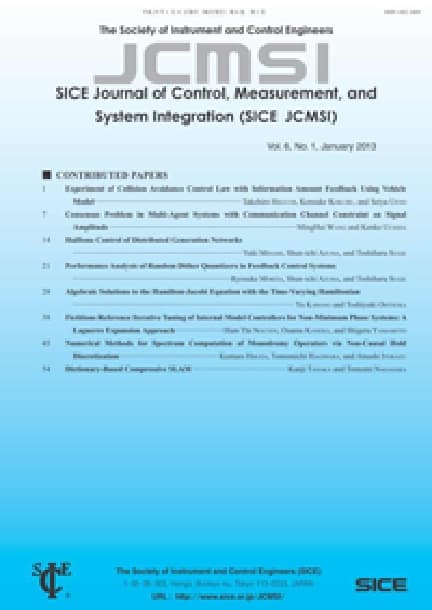Signal-Limitation Filters to Simultaneously Satisfy Constraints of Velocity and Acceleration Signals
Hiroshi OKAJIMA, Yuta NAKABAYASHI, Nobutomo MATSUNAGA
pp. 1-8
DOI:
10.9746/jcmsi.13.1Abstract
In this paper, we propose a filter structure whose output satisfies the velocity and acceleration constraints for any input signals. In the field of factory automation, step signals are sometimes converted into trapezoidal waves to satisfy the intended velocity limitations. This helps the operators avoid overload in industrial robots. In some cases, physical protection of the equipment, safety, and ride quality can be ensured by limiting the characteristics of input signals in actual plants. A signal-limitation filter is proposed for the input signal to satisfy the intended signal limit. In the previous study, a signal-limitation filter structure was provided as a simple unit-feedback control with a saturation function. The filter structure in the previous study had a delay between the input and output signals because it is difficult to design gains considering both the saturating and non-saturating cases. To solve this problem, we propose a novel filter structure that includes feedforward and feedback components. Applying this filter structure with feedforward terms including saturation enables us to fulfill the desired limitations for arbitrary input signals. We evaluated the proposed structure in a signal-limitation filter that simultaneously limits the velocity and acceleration. The simulation results demonstrate the effectiveness of our proposed filter.
Readers Who Read This Article Also Read
Transactions of the Institute of Systems, Control and Information Engineers Vol.32(2019), No.11
MATERIALS TRANSACTIONS Vol.53(2012), No.9
Tetsu-to-Hagané Vol.61(1975), No.13









